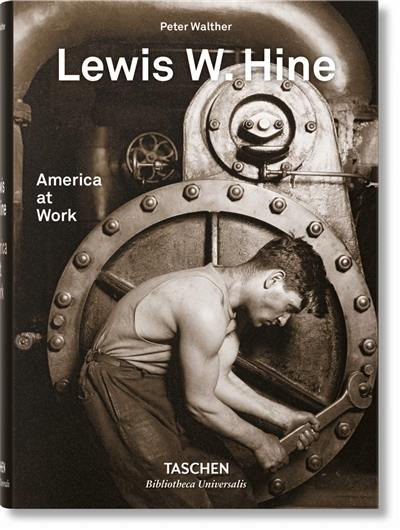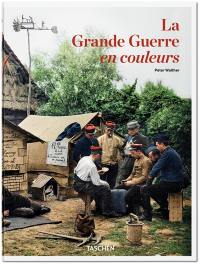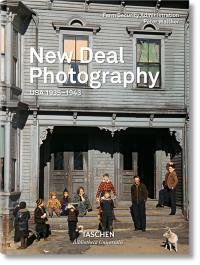
Fiche technique
Format : Relié sous jaquette
Nb de pages : 537 pages
Poids : 1067 g
Dimensions : 15cm X 21cm
ISBN : 978-3-8365-7234-7
EAN : 9783836572347
Lewis W. Hine
America at work
Quatrième de couverture
Photographe, enseignant et sociologue, Lewis W. Hine (1874-1940) a déterminé comme nul autre notre connaissance de la vie ouvrière en Amérique au début du XXe siècle. Combinant sa formation de pédagogue et ses préoccupations humanistes, Hine fut l'un des premiers photographes à utiliser l'appareil comme un outil documentaire. Ses clichés, notamment ceux montrant des enfants dans les filatures de coton, les usines, les mines de charbon et aux champs, sont devenus des icônes de l'histoire de la photographie. Ce livre rassemble une sélection représentative des photos prises tout au long de sa vie par Lewis W. Hine, de ses premières incursions dans le documentaire social à ses explorations tardives plus artistiques et interprétatives du médium photographique, en passant par ses images phénoménales de la construction de l'Empire State Building et sa mise en scène symbiotique de l'homme et de la machine, qui s'inscrit en commentaire de l'industrialisation galopante.
Photographer, teacher, and sociologist Lewis W. Hine (1874-1940) shaped our consciousness of American working life in the early 20th century like no other. Hine was one of the earliest photographers to use the camera as a documentary tool. His images, especially those of children working in cotton mills, factories, coal mines, and fields, became icons of photographic history. This book brings together a representative collection of Lewis W. Hine's photography from all periods of his work. It spans his earliest forays into social-documentary work through to his more artistic and interpretative late photographs, including his phenomenal images of the construction of the Empire State Building and his symbiotic staging of human and machine as a comment on increasing industrialization.
Der Fotograf, Lehrer und Soziologe Lewis W. Hine (1874-1940) hat unser Bildgedächtnis von der amerikanischen Arbeitswelt des frühen 20. Jahrhunderts wie kein anderer geprägt. Hine war einer der ersten Fotografen, die die Kamera als dokumentarisches Werkzeug einsetzten. Seine Bilder, insbesondere die von Kinderarbeit in Baumwollspinnereien, Fabriken, Kohlebergwerken und in der Landwirtschaft, wurden zu Ikonen der Fotografiegeschichte. Dieses Buch zeigt eine repräsentative Auswahl von Lewis W. Hines Fotografien aus allen Epochen seines Schaffens. Es reicht von seinen ersten Streifzügen in die sozialdokumentarische Arbeit bis hin zu seinem eher künstlerischen und interpretativen Spätwerk, einschliebêtalich seiner phänomenalen Bilder vom Bau des Empire State Building und seiner symbiotischen Inszenierung von Mensch und Maschine als Kommentar zur zunehmenden Industrialisierung.










